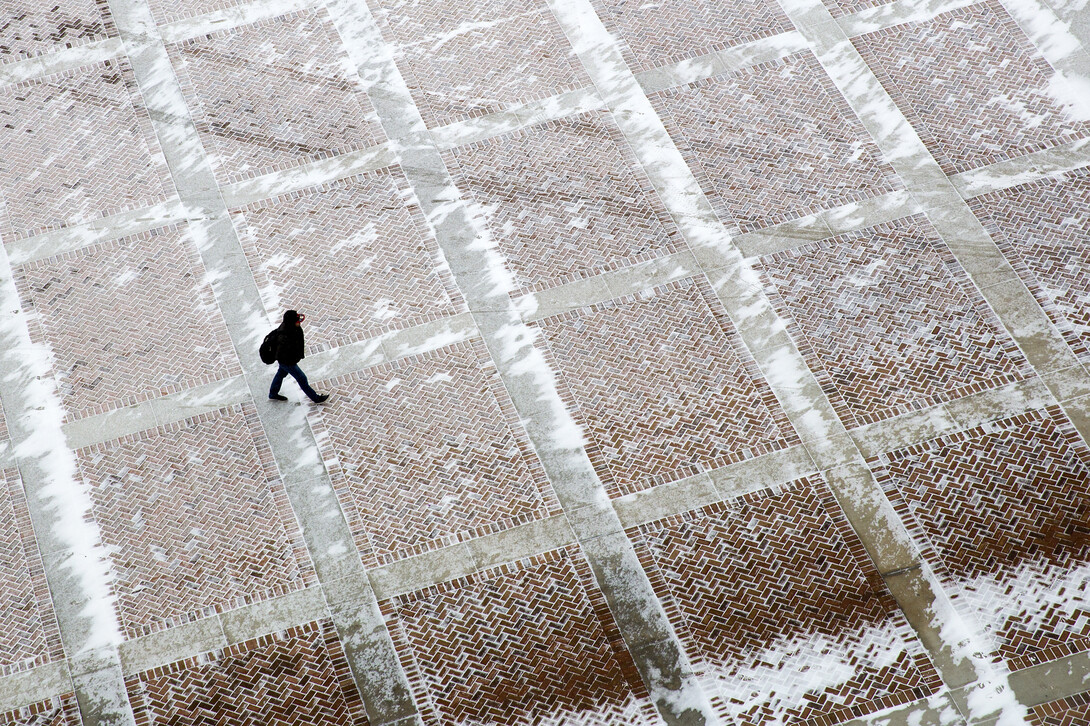
The state climatologist at UNL says planting delays should not be a concern and that temperatures should be on the upswing across the state.
While soil temperatures are still below normal for planting, that problem can be solved if there are persistent 60-degree-and-above-high days so producers can plant without worrying about the viability of their seed, said Al Dutcher, state climatologist.
A cold winter has put the state about two to three weeks behind normal, Dutcher said.
Temperatures for the entire state of Nebraska were 1.8 degrees below normal this winter, the 27th coldest since records began in 1896, according to the National Climatic Data Center. Individual locations across eastern Nebraska averaged more than 3 degrees below normal. In addition, precipitation came in at .70 below normal, the 18th driest winter since 1896.
The latest snowpack information from the Natural Resources Conservation Service as of April 1 shows:
The South Platte River Basin snow water equivalent – amount of water in snow pack – is 133 percent of normal.
The northern branch of Platte River, north of Seminole Reservoir in Wyoming, is at 140 percent snow water equivalent.
South Central Wyoming, the basin that would impact Pathfinder and Alvoca, is at 125 percent snow water equivalent.
The Laramie Basin, which is important to Scottsbluff area irrigators, is at 139 percent snow water equivalent.
The Sweet Water Basin, in the western extension of the Platte River Basin, is at 114 percent snow water equivalent, while the Casper Drainage Basin is at 129 percent snow water equivalent.
“With these equivalents and normal moisture for the remainder of April, it should result in above normal stream flow rates through mid-summer,” Dutcher said. “We also can expect a great component of runoff this year – 85 to 90 percent of that snowpack will become a runoff component.
“So, my suspicion right now is if we get normal precipitation, we’ll be looking at runoff in the 125 to 130 percent range of normal, which would be a significant improvement over the past two spring seasons.”
However, it most likely will not completely refill northern Platte River Basin reservoirs, he said. In addition, the longer the snowpack stays around, the better likelihood it will hold excessive heat from building into the Central Rockies and should help supplement front range thunderstorm development, at least for the first part of the growing season.
The primary focus this winter has been the battle between a strong upper air ridge situated over the southwestern U.S. and a deep trough over the eastern half of the country. The resultant upper air ridge has led to the development of extreme to exceptional drought over most of California, Dutcher said. Further east, heavy moisture has persisted over the eastern Corn Belt since last October.
“We have seen that ridge weaken in response to above-normal sea surface temps developing in Gulf of Alaska,” Dutcher said. “More importantly, a more active precipitation pattern has shown signs of developing across the central and northern High Plains region. Unless an extended dry pattern develops, significant planting delay issues for the upper Great Lakes and Ohio River valley regions are likely.”
While there was significant moisture this past fall across eastern Nebraska, an exceptionally dry December-March eliminated those surpluses, and the U.S. Drought Monitor is showing moderate drought conditions have developed with exception of northeast Nebraska, he said.
This is mainly due to lack of snow and its influence on stock ponds, stream flows and water tables.
Spring crops and native vegetation will begin to extract moisture out of the soil profile during the next couple of weeks, making it critically important that moisture events bring at least normal precipitation so sub-soil moisture reserves continue to build during the summer growing season, Dutcher said.
“Typically this time of year average weekly precipitation exceeds water use by vegetation, but in about six weeks, actively growing crops normally begin to extract more moisture out of the soil profile than is replaced by precipitation events.
“If nothing changes, and the persistent eastern U.S. upper air trough remains a player going into growing season, we would expect to see the development of thunderstorms, higher humidity and isolated tornado development as cold fronts sweep southeastward from the southern Prairie province region of Canada. If this pattern doesn’t hold, we would see more energy come into the western United States, and those systems would point to more wide spread thunderstorm outbreaks as storm systems move into the southern and central High Plains region,” Dutcher said.
So far Nebraska has been in a holding pattern and hasn’t been able to keep temperatures in the 70-degree range for more than a couple of days at a time.
It is critical that temperatures begin to stay persistently higher to get dew points to rise, soil temperatures to rise and plants start to grow.
“This is why we haven’t seen a big dormancy break with warmer temperatures,” Dutcher said. “Right now everything is so cold that everything is delayed. There is moisture underneath the surface, it just hasn’t warmed up enough to promote active growth.”







